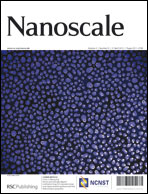A low-cost, compatible with flexible electronics, high performance UV sensor has been achieved from a reduced graphene oxide (RGO) decorated hydrangea-like ZnO film on a PDMS substrate. The hydrangea-like ZnO UV sensor has the best UV sensing performance among devices made of three kinds of ZnO nanostructures synthesized by a hydrothermal method, and demonstrated a dramatic enhancement in on/off ratio and photoresponse current by introducing an appropriate weight ratio of RGO. The on/off ratio of the 0.05% RGO/ZnO sensor increases almost one order of magnitude compared to that of a pristine hydrangea-like ZnO UV sensor. While for the 5% RGO decorated ZnO sensor, the photoresponse current reaches as high as ∼1 μA and exceeds 700 times that of a ZnO UV sensor. These results indicate that RGO is an appropriate material to enhance the performance of ZnO nanostructure UV sensors based on its unique features, especially the high optical transparency and excellent electronic conductivity. Our findings will make RGO/ZnO nanohybrids extraordinarily promising in optoelectronics, flexible electronics and sensor applications.

You have access to this article
 Please wait while we load your content...
Something went wrong. Try again?
Please wait while we load your content...
Something went wrong. Try again?


 Please wait while we load your content...
Please wait while we load your content...